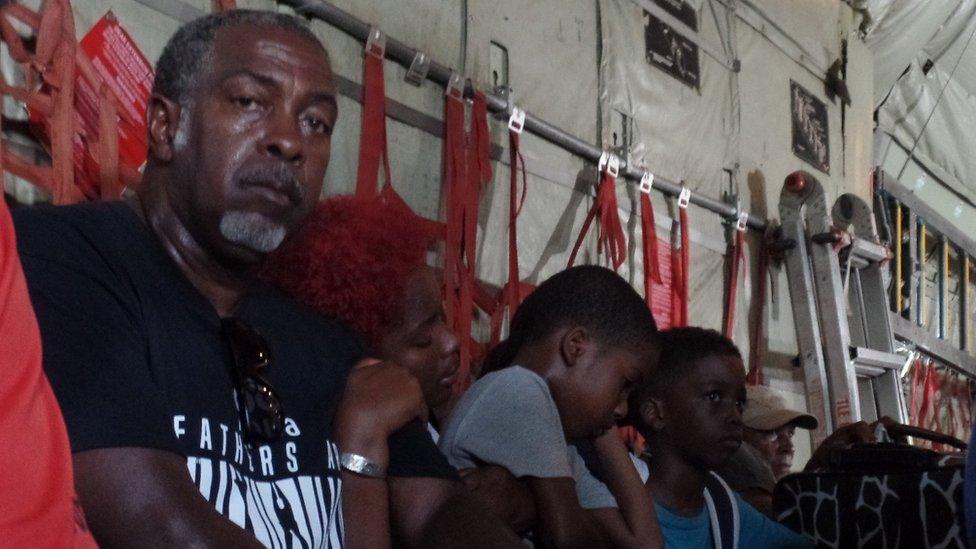Hurricane Irma: Two-thirds of Florida without power
- Published
The BBC's correspondents in the region chart Irma's path of destruction
About 6.5 million homes in Florida, two-thirds of the total, are without power after Hurricane Irma cut a deadly path through the state, officials say.
Relief operations are under way and engineers are working to restore power, but many areas remain stranded.
The islands of the Florida Keys and western parts of the US state bore the brunt of the category-four hurricane.
Irma hit Florida on Sunday and weakened to a tropical storm before becoming a tropical depression early on Tuesday.
The storm was downgraded as it moved north towards Atlanta, with maximum sustained winds of 56km/h (35mph) later recorded, the National Hurricane Center (NHC) said in a statement.
The NHC statement, external added that while heavy rain was expected to continue across south-eastern states, all storm surge and tropical storm warnings had been discontinued.
Media reports link at least four deaths to the storm in Florida. Last week it killed at least 37 people in Caribbean islands.
Aerial footage shows the damage to homes in Orlando, Florida
White House Homeland Security Adviser Tom Bossert said it will be some time before residents in the Florida Keys are able to return to their homes.
"I would expect that the Keys are not fit for re-entry for regular citizenry for weeks", he said.
Speaking as he went on an aerial tour of the Keys, Florida Governor Rick Scott said: "Power lines are down throughout the state. We've got roads that are impassable, so everybody's got to be patient as we work through this."
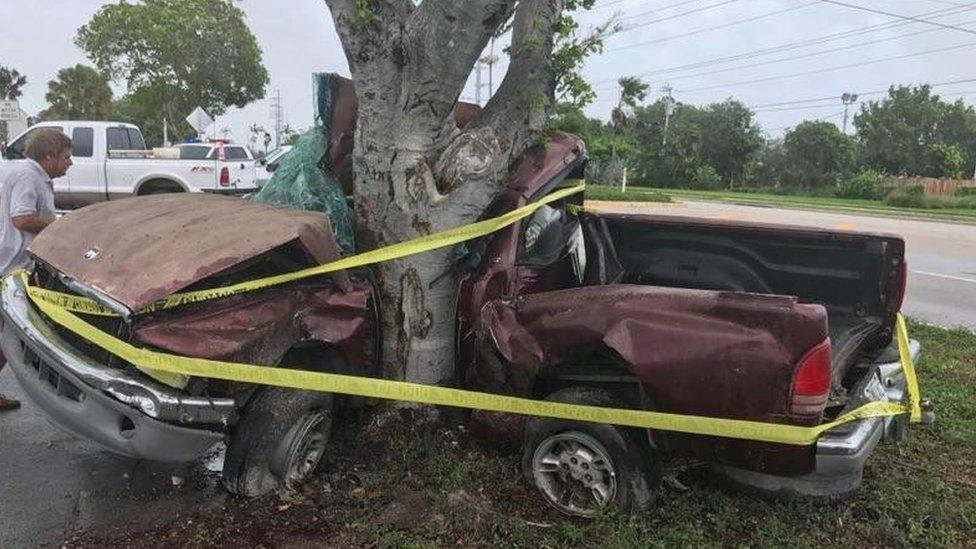
A number of fatal car crashes in Florida are being linked to the storm
The Keys are cut off from the mainland, as the 42 bridges that link them are being assessed for damage. Reports say that 10,000 people decided to ride out the storm.

How big will the disaster response be?
Although Miami was spared the worst, large parts of the city are under water. Winds have snapped power lines and 72% of homes there are without electricity, officials say.
On the west coast of Florida, drone footage from Naples, external, a town on the coast of the Gulf of Mexico about 125 miles (200km) to the north-west, shows rows of shattered suburban homes on streets under water.
President Donald Trump has released emergency federal aid for Florida, describing the hurricane as a "big monster".
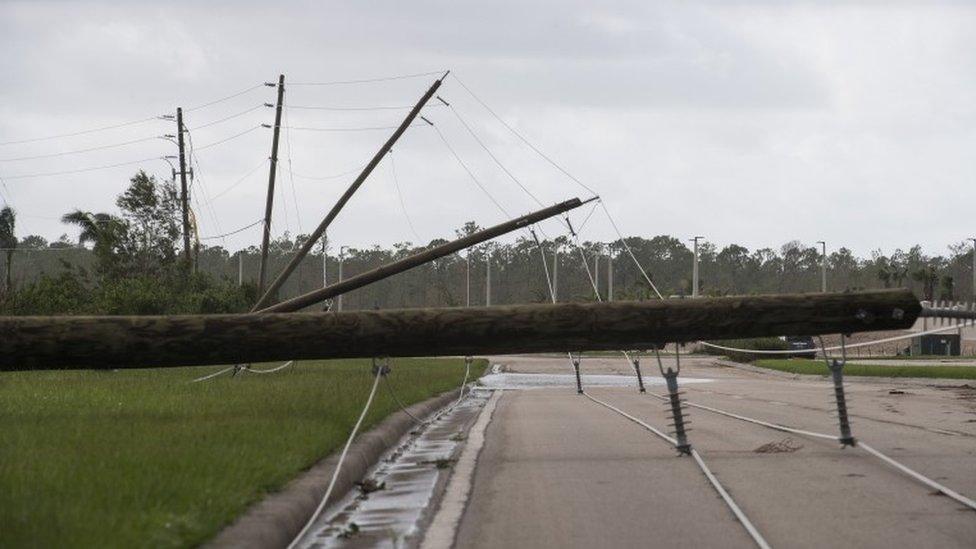
Power lines are down across the state
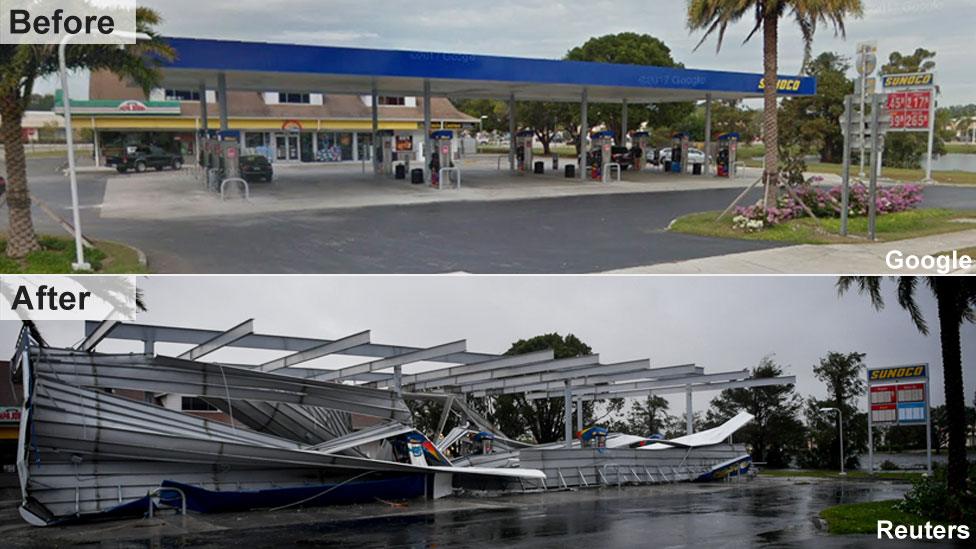
Before and after in Bonita Springs, Florida
How have residents felt the impact?
"We feel the building swaying all the time," restaurant owner Deme Lomas told Reuters news agency by phone from his 35th-floor apartment in Miami.
At least four deaths have been connected to the storm:
Two police officers died when their vehicles collided in Hardee County in central Florida
A person died in a single-car crash near Orlando
A man died in the town of Marathon in the Florida Keys when his vehicle hit a tree on Saturday
Looters caught on camera in Miami
Some 6.3 million people in the state were told to evacuate before Irma arrived.
Fort Lauderdale-Hollywood International Airport and Miami International Airport were closed on Monday.
Night-time curfews have been imposed in areas such as Miami, where 13 people were arrested on suspicion of looting.
Amateur footage shows flooding in central Miami
Which areas were hit before Florida?
Irma is the most powerful Atlantic storm in a decade, and caused widespread destruction on several Caribbean islands:
Cuba: At least 10 people were killed by the storm on the island, officials say. Three quarters of the population are without power
St Martin and St Barthelemy: Six out of 10 homes on St Martin, an island shared between France and the Netherlands, are now uninhabitable, French officials say. Nine people had died and seven were missing in the French territories, while four are known to have died in Dutch Sint-Maarten
Turks and Caicos Islands: Widespread damage, although extent unclear
Barbuda: The small island is said to be "barely habitable", with 95% of the buildings damaged. One death has been confirmed
Anguilla: Extensive damage with one person confirmed dead
Puerto Rico: More than 6,000 residents of the US territory are in shelters and many more without power. At least three people have died
British Virgin Islands: Widespread damage reported, and five dead
US Virgin Islands: Damage to infrastructure was said to be widespread, with four deaths confirmed
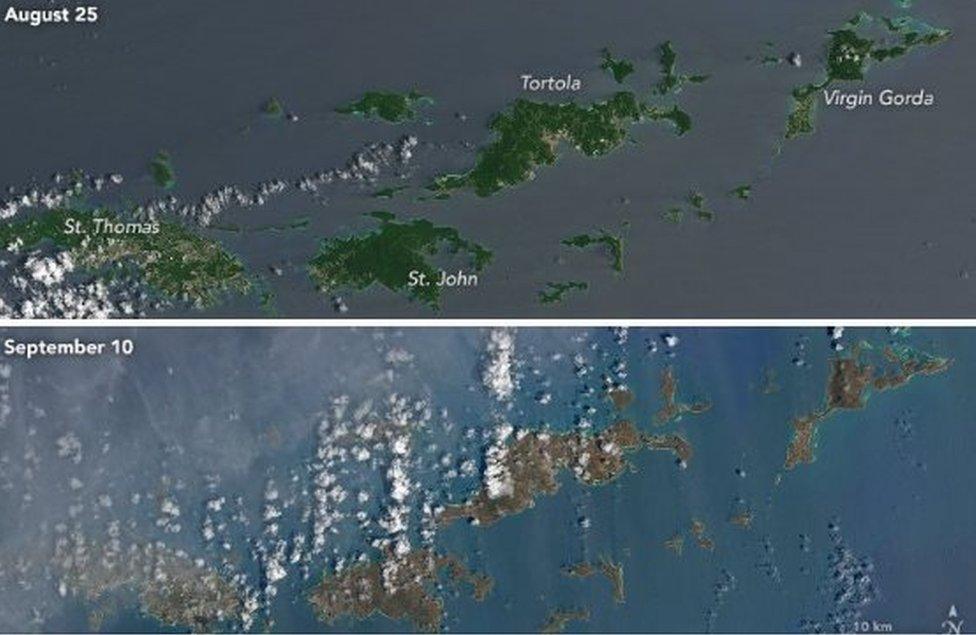
A Nasa picture shows the Virgin Islands have turned from green to brown
Another hurricane, Jose, has been weakening over the western Atlantic, external, with swells due to affect parts of Hispaniola (the island split into Haiti and the Dominican Republic), the Bahamas, and the Turks and Caicos Islands, later this week.

Are you in the region? Are you a holidaymaker unable to get a flight home or a resident who has been preparing for Hurricane Irma? If it is safe for you to do so, share your experiences by emailing haveyoursay@bbc.co.uk, external.
Please include a contact number if you are willing to speak to a BBC journalist. You can also contact us in the following ways:
WhatsApp: +447555 173285
Tweet: @BBC_HaveYourSay, external
Send pictures/video to yourpics@bbc.co.uk, external
Upload your pictures / video here, external
Send an SMS or MMS to 61124 or +44 7624 800 100
Please read our terms & conditions
- Published12 September 2017
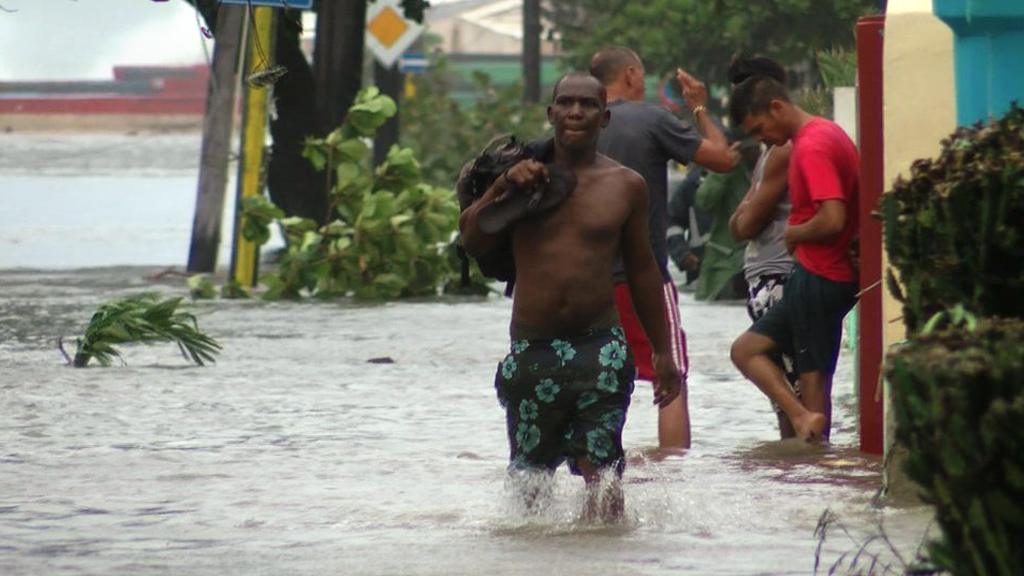
- Published12 September 2017

- Published12 September 2017
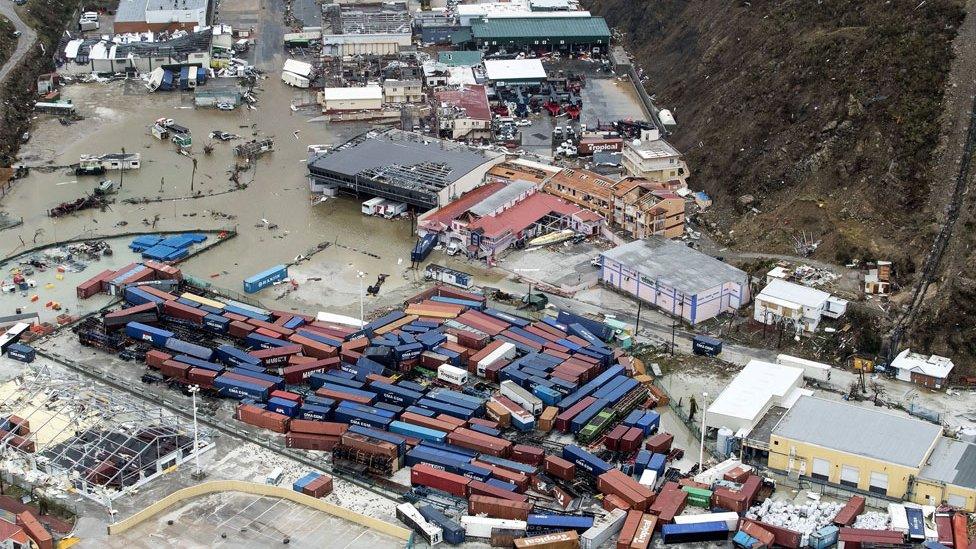
- Published11 September 2017
- Published11 September 2017
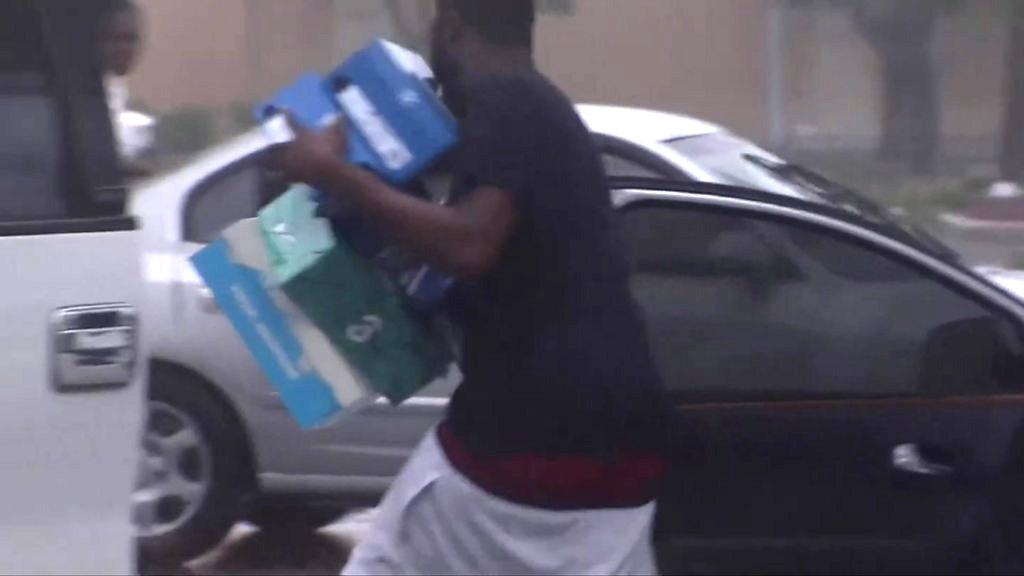
- Published11 September 2017
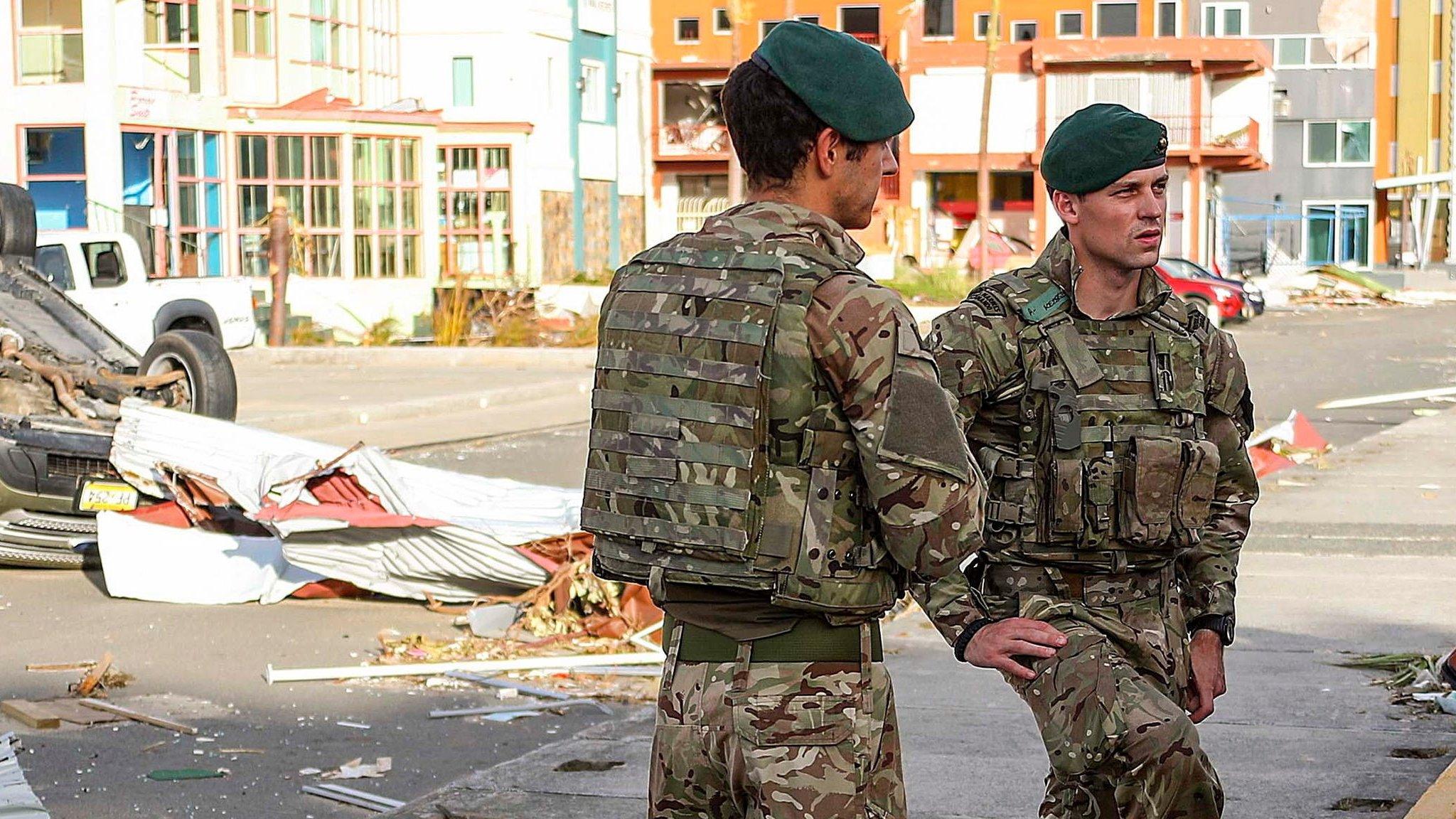
- Published10 September 2017

- Published9 September 2017
